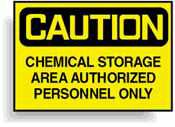 |
 |
| MSDS Topics |
Free Sites | FAQ's | Regulations | Glossary | Software | Suppliers |
| Books | Forum | Poll | Fun stuff | Quiz | Store | |
| MSDS and safety supplies | Search ALL our MSDS info | |||||
 | |||
 |
 |
 |
|
| Title: 02/14/1996 - Standards and regulations applicable in the U.S. for sale, import, handling, and transportation of various chemicals. | |
| Record Type: Interpretation | Standard Number: 1910.1200 |
February 14, 1996
Saroj
SATISFY J-5A
Green Park Extension
New Delhi -- 11016, INDIA
Dear Sir/Madame:
This is in response to your letter of October 6, 1995, to the Occupational Safety and Health Administration requesting information about the standards and regulations applicable in the United States for the sale, import, handling, and transport of various chemicals.
|
The Occupational Safety and Health Administration (OSHA) is responsible specifically for regulating the workplace use of materials such as the chemicals you list, and for protecting the health and safety of workers who may be exposed to such materials. Accordingly, OSHA standards address a wide range of workplace health and safety issues, including electrical safety, fire safety, chemical exposure, emergency response, first aid, personal protective equipment, and engineering controls, such as ventilation. Each of the OSHA standards addressing these issues may, to some extent, be applicable to the manufacture, transport, storage, and handling of the chemicals you list. Of these relevant OSHA standards, however, the Hazard Communication standard (Title 29 Code of Federal Regulations (29 CFR) Part 1910.1200) perhaps most directly affects importers and manufacturers of chemicals. This standard (a copy of which is enclosed for your information) requires chemical manufacturers or importers to assess the hazards of the chemicals which they produce or import and communicate these hazards with appropriate warnings and required protective measures to employees and downstream users through material safety data sheets and product labeling.
|  We carry a variety of circuit breaker lockout supplies and kits at Safety Emporium. |
In any case, employers or chemical manufacturers and importers are responsible for evaluating their workplace operations and determining the extent to which OSHA standards apply. To assist in this effort, a complete set of OSHA General Industry standards (29 CFR Part 1910) may be obtained by writing or calling the Superintendent of Documents, U.S. Government Printing Office, Washington, D.C. 20402, (202) 783-3238.
It is important to note, however, that a number of other federal agencies also regulate various aspects of chemical manufacture, import, sale, transportation, and handling. For instance, the Department of Commerce, the Department of Transportation, and the Environmental Protection Agency may have specific regulations regarding the import, sale, and transport of the materials you listed. In addition, individual states may have further regulations regarding these materials. Information on such federal and state regulations must be obtained by contacting each of these agencies directly. The Chemical Manufacturers Association, a private sector trade association, may be able to assist you identifying other relevant regulatory agencies and their respective standards or requirements. The addresses for these offices are listed below:
|
U.S. Department of Transportation [Hazardous Materials Transportation] 400 7th Street S.W. Washington, D.C. 20590-0001
U.S. Department of Commerce
U.S. Environmental Protection Agency
Chemical Manufacturers Association
|  Encourage proper work habits with safety signs, labels and training from Safety Emporium. |
We hope you find this information helpful. Thank you for your interest in worker safety and health.
Sincerely,
Ruth McCully, Director
Office of Health Compliance Assistance
Enclosure
October 6, 1995
Directorate of Compliance Programs
Occupational And Safety Administration (OSHA)
U.S. Department of Labor (DOL)
200 Constitution Avenue, N.W.
Washington, D.C. 20210 U.S.A.
Dear Sir,
We would like to introduce ourself as an organization established primarily to cater to information needs of industry by providing customized services in the field of standards. We are attaching with this letter a list of 26 Rubber Chemicals giving their description and mode of packaging. We request you to kindly provide us the following information for these Chemicals.
|  This handy poster explains the common hazardous chemical labeling systems. Get yours at Safety Emporium. |
Please send the information to the extent available and if possible, also send us a complimentary copy of the relevant documents (English version if available). In case it is not possible to send complimentary copy, please let us know the price and source from where the documents can be obtained. If you feel that any other organization in your country can provide additional information, please let us know the name and address of that organization also.
Thanking you,
Yours faithfully,
(Saroj)
For the description and mode of packaging of the following 26 Rubber Chemicals, see printed copy:
Acetone/Diphenylamine Condensation Product
Phenyl-B Napthyalmine (PBN)
Blend of Arylamines
Blend of DPPD & Arylamine Derivates
Diaryl p-Phenylene Diamines
Polymerized 1,2-Dihydro 2,2,4-Trimethylquinoline
N-(1,3-Dim-ethyl-Butyl-N-Phenyl-p Phenylene) Diamine
2-Mercapto Benz Imidazole
N-(1,3-Dimethylbutyl)-N-pheny-P-
2-Meracapto Benzothiazole
Dibenzothiazyl Disulphide
Zinc 2-Mercaptobenzothiazole
N-Cyclohexyl-2-Benzothiazole Sulfenamide
N-tert-Butyl-2-Benzothiazole Sulfenamide
2-(Morpholinothio-Benzothiazole
N,N-Dicyclohexyl-2-Benzothiazole Sulphenamide
Tetramethyl Thiuram Disulphide
Zinc Diethyl Dithio Carbamate
Activated Thiazole
Blended Dithio Carbamate
4,4 Dithio Dimorpholine
Phenylene Diamine
N- Nitrodiphenylamine N-Cyclohexylthiophthalamide (CTP)
Diphenylamine
Pentachlothiophenol with actvator & dispersing aids.
The official, public domain, OSHA version of this document is available at http://www.osha.gov/pls/oshaweb/owadisp.show_document?p_table=INTERPRETATIONS&p_id=22076&p_text_version=FALSE